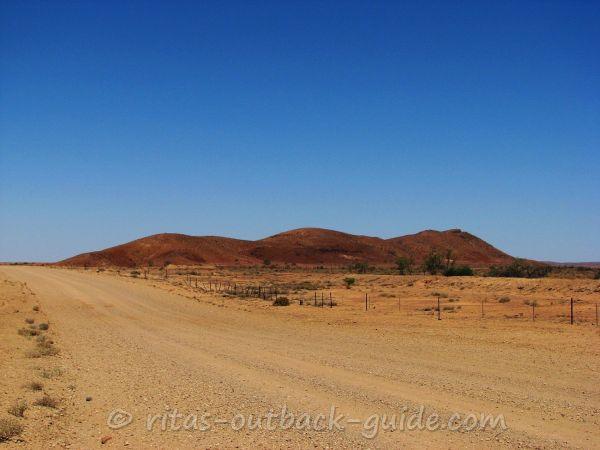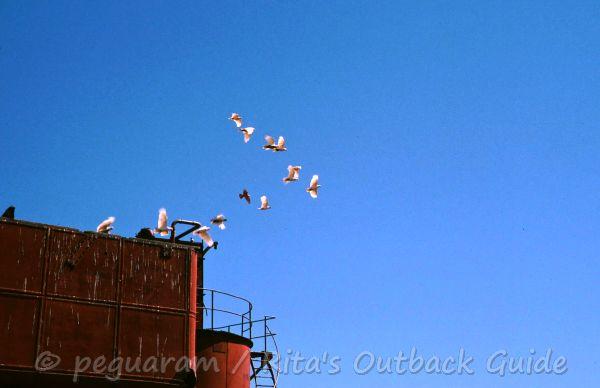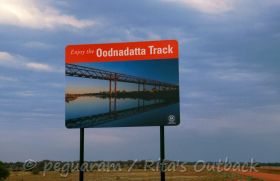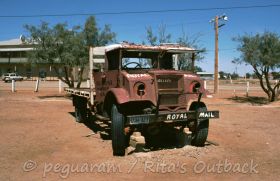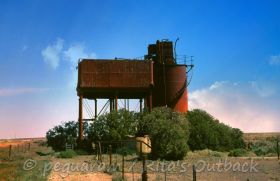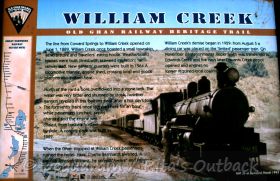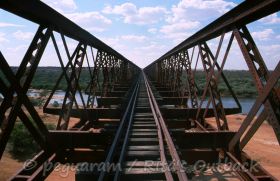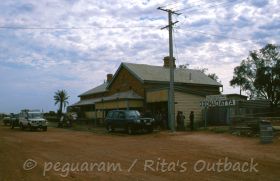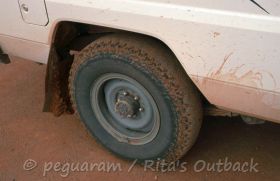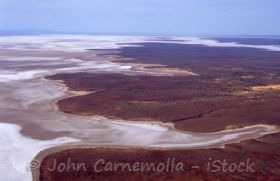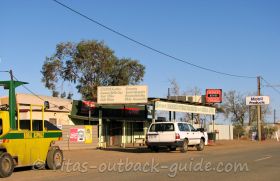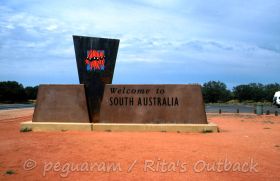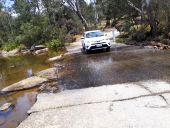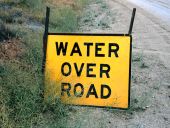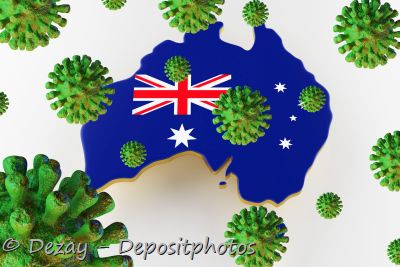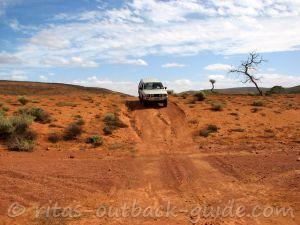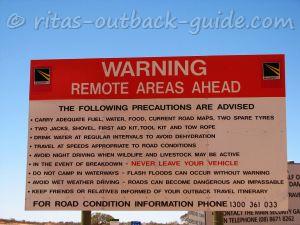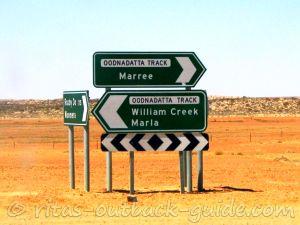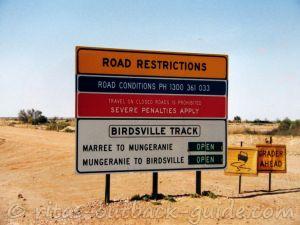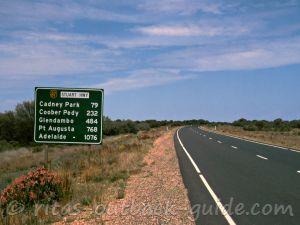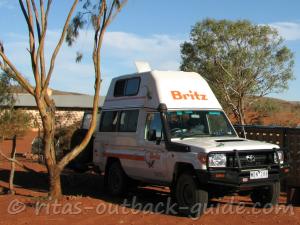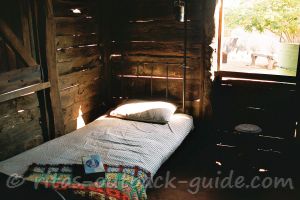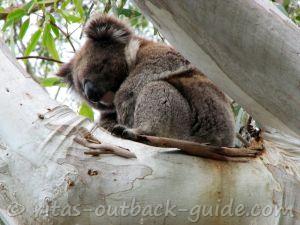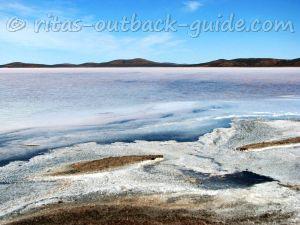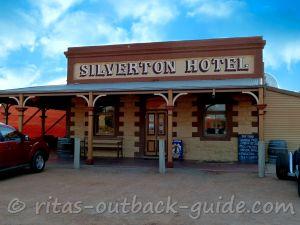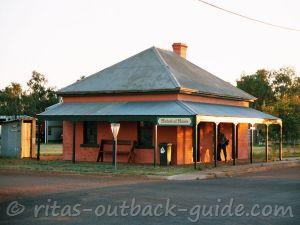Marree To William Creek
The first day along the Oodnadatta Track
So, did you enjoy Marree? Let's start the adventure Oodnadatta Track.
The first part from Marree to William Creek (204 km) is a journey back into the history of Australia's white settlement.
The Oodnadatta Track leads through partly deep-red gibber plains covered
with salt bush. The road surface is stony but fairly good to travel. The
quality of the track always depends on when it rained, and when the
grader went through last time.
Several mound springs, ruins of railway sidings and low sand ridges
bring diversity to the flat and barren landscape. The road follows the
routes of the Old Telegraph Line and the Ghan Railway closely, so there
is a lot to explore. Take your time and
enjoy this adventurous experience. It is a beautiful and varied
landscape.
On our last visit in this area it was very, very dry. The last bits of vegetation looked very pale and dying.
Compare it with the picture below, taken outside of Marree. This was on our first trip, after the track was closed for a couple of days due to flooding. Good rain really makes a difference out here.
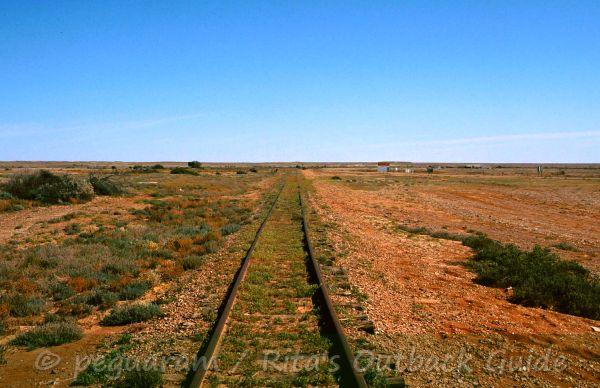 Old rail tracks on the outskirts of Marree
Old rail tracks on the outskirts of MarreeAttractions between Marree and William Creek
Callanna railway siding (R.S.)
Callanna, just 14 km out of Marree, is the first of many relics of the Old Ghan
railway line. A rusty water tower and pipe is all that is left. These
railway sidings were kind of watering places for the steam locomotives
of the old Ghan railway. Fettlers lived in small cottages at the sidings
and maintained the site as well as the railway line between the
sidings.
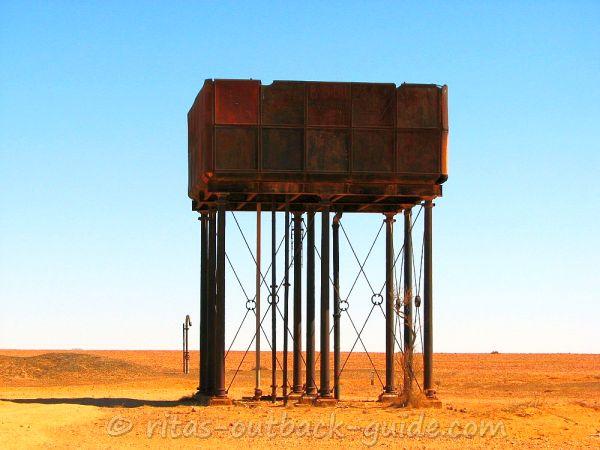 Old water tank at Callana railway site
Old water tank at Callana railway siteLake Eyre South
The next highlight is Lake Eyre South. There is a viewing
point (with interpretive signs about geology, history, flora etc) about halfway between Marree and William Creek. Lake Eyre is probably
the most famous feature along the Oodnadatta Track. The usually dry salt
lake covers an area of 9700 km² and is up to 15m below sea level. You
can't appreciate the dimensions of Lake Eyre from this viewing point,
so it is best to take a scenic flight from Marree or William Creek.
Warning! Don't even think about driving out on the lake, even if
it looks dry. Your car will break through the saline crust, and you get
bogged in the mud.
Curdimurka Railway Siding
Curdimurka is just a stone’s throw from Lake Eyre. It is the most impressive siding
along the old Ghan railway line as it’s the only one that’s still in
one piece. This is the true Australian Outback. Whichever direction you
look there’s nothing between you and the horizon except the scorching
sun.
Local Aborigines believed that a giant snake named "Kuddimuckra" lived at nearby Lake Eyre. They avoided travelling along the shores of the lake. When they saw the approaching Ghan for the first time, they thought it was Kuddimuckra, and they fled.
Would you believe that this forlorn place came alive with some 1000
people in evening dresses every two years? The Curdimurka Outback Ball was a big event in the 1980s and 1990s. People flew in from all around the country to dance the
night away, and to camp in the dust after the party.
The Curdimurka Ball raised money for the Ghan Railway Preservation
Society, an organisation that preserved what was left from the old Ghan
railway line.
Unfortunately, the Curdimurka Outback Ball isn't held any more, hopefully it will be revived some day.
Wabma Kadarbu Conservation Park
At km 124 is the turnoff to Wabma Kadarbu Conservation Park with two well-known mound springs. At the turnoff is another ruin of a stone cottage.
The track to the springs is very rough, corrugated and goes mostly over
clay pans which can become very soggy after rain. This is strictly a
dry-weather road. The salt-crusted plain looks unreal, and there is
hardly any vegetation. The only features are the low rises of the mound
springs.
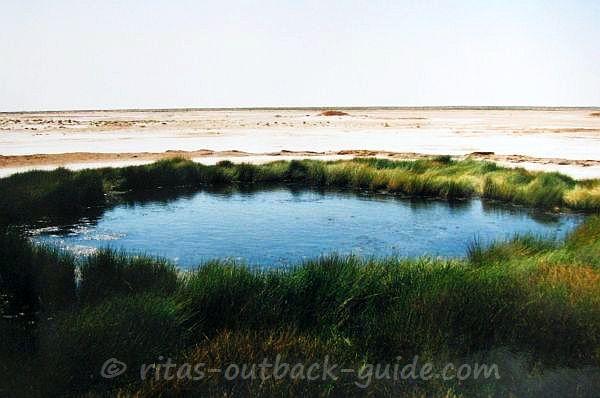 Blanche Cup
Blanche Cup
Blanche Cup is a classic mound spring, about twenty metres high.
Around a pool of clear blue water grows a circle of lush green grass
which is adapted to the salty water. The water and grass are an
unbelievable sight in this barren, salt-crusted area.
Although the
pool looks really inviting for a dip, swimming is strictly forbidden as
these mounds are rather fragile. That’s the reason why this delicate
environment has been protected in a conservation park. Hopefully that
reminds thoughtless people to care for nature.
Opposite from Blanche Cup is Hamilton Hill, an extinct mound spring, about 40 m high.
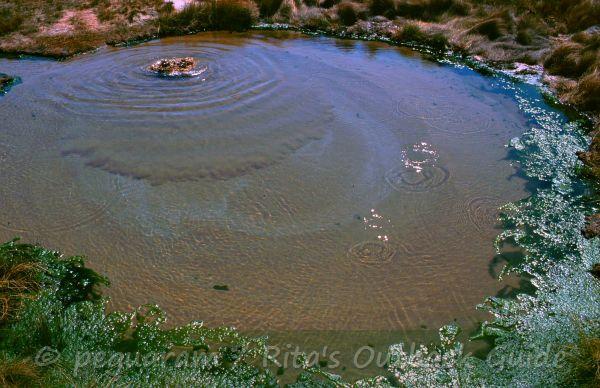 The Bubbler
The BubblerAbout a kilometre further is the Bubbler, another remarkable
example of a mound spring. The Bubbler is a pool of fine sand, just like
quicksand, covered by clear water. More or less frequently, eruptions
of gas create bubbles of various sizes stirring up the sand.
We
spent a lot of time here just waiting for better and greater bubbles.
The grass on the Bubbler is not as green as that at Blanche Cup. Instead
there’s a circle of dark-green algae at the water’s edge, and also
along the small overflow.
Coward Springs
This was once a little settlement with railway houses, hotel, hospital and a
store. Only the the stationmaster's house and a cottage are left.
Coward Springs is an oasis in this driest part of South Australia. Enjoy
a dip in the hot pool which is fed by a flowing bore. You'll be
surprised to see water birds in the nearby wetlands. There's a camping
area and day time visitors are allowed to use the facilities for a small
fee into the honour box.
Check the Coward Springs website for more information.
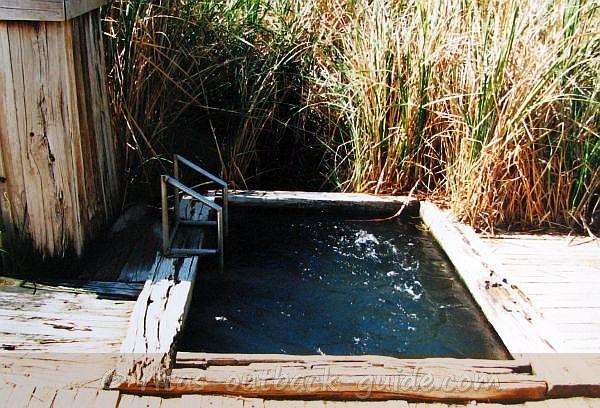 The Spa at Coward Springs
The Spa at Coward SpringsCoward Springs is an incredible place. When you see the wetlands and palm trees, it is hard to believe that just outside this oasis it is dry and dusty, usually.
The Oodnadatta track continues through flat and barren land with little vegetation. Occasional rises are mound springs like Kewson Hill, the largest active spring.
Strangways Telegraph Station
Strangways is another historic site about two kilometres west of
the Oodnadatta Track. The turnoff is at km 165. The path to the site is
rather sandy with deep ruts.
Strangways was one of many repeater stations along the Overland Telegraph Line.
A fence protects the historic site. There’s a low stile to climb over.
The walk to the ruins over stony terrain up a small hummock is strenuous
when it is hot, however, the outlook is worth the effort. Some
stone-walled sheep pens and a large stone tank, which actually looks
like the ruin of a house without doors, is all what remained of the
former station.
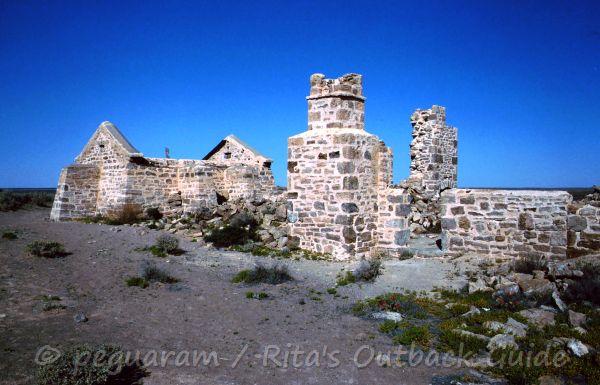 Ruins of Strangways Telegraph Station
Ruins of Strangways Telegraph StationFrom Strangways the scenery along the OT is slightly changing as, for
the next 15 kilometres or so, the Irrapatana sand hills are stretching to
the horizon along the track. The dunes and sandy ridges are outliers of
the Simpson desert.
The first section of the track from Marree to William Creek is packed
with highlights. As you arrive in William Creek you have managed the
first stage of the Oodnadatta Track.
Oodnadatta Track -> the route step by step
Don't miss the articles below which give you many more details about the route.
Get general facts, an introduction and overview of the track (617 km)
Discover the history of the early days in this fascinating town
The first section of the Oodnadatta Track is in my
opinion the most diverse part of the track (204 km)
This small town offers everything a traveller needs. You'll be surprised
what you'll find in this tiny village
See more relics of the Old Ghan, including the huge Algebuckina railway bridge (202 km)
First discover the township Oodnadatta, before you go on the last leg of the track (211 km)
Don't miss to read this page, it also includes useful tips by Outback Guide readers
Read about Australia's largest lake which only fills every couple of years
Find camp spots, where to get fuel, a good meal, and a cold beer
Outback South Australia is a wonderful place to explore, don't miss it
Enjoy this most interesting (and my favourite) track in the South Australian Outback.
Below you'll find more useful articles to help you plan your journey.
- Home ›
- Oodnadatta Track ›
- Marree to William Creek
